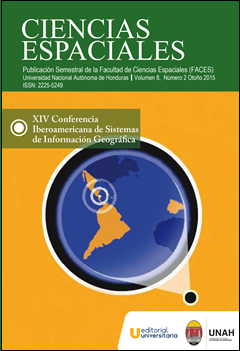Land use planning and its role in building healthy places case: metropolitan area of Toluca, Mexico
DOI:
https://doi.org/10.5377/ce.v8i2.2076Keywords:
spatial planning, healthy places, human healthAbstract
The purpose of this paper is to analyze the role of spatial planning in building healthy places, to environmental and socioeconomic problems that negatively affect the health of the population. It is considered a diagnosis of the features socio-economic, environmental and population health of Toluca Metropolitan Area (ZMT).
Methodology. It is a descriptive study, cross-sectional and type of research is quantitative. The sources of information are: satellite images, thematic mapping, Statistical Yearbook of State of Mexico of National Institute of Statistics and Geography (INEGI, 2011) and data from the Health Institute of State of Mexico (ISEM), among other sources.
Among the main results of the research highlights the fact that it is municipalities with very low and low levels of marginalization; degree of social backwardness very low and medium; human development index is medium high and high; economic activities mainly in services and industry, however presents environmental problems such as soil erosion and lack of green spaces; as well as high mortality rates mainly of chronic degenerative as diabetes mellitus, ischemic heart diseases, malignant tumors and cirrhosis and other liver diseases.
Given these problems the spatial planning plays has important role in generating of focused strategic proposals for creating healthy places with a holistic and in this case regional.
Revista Ciencias Espaciales, Volumen 8, Número 2 Otoño, 2015; 178-192
Downloads
1515




